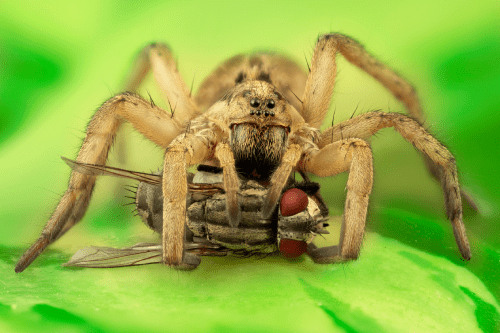Appearance
Wolf spiders are generally robust and agile hunters with good eyesight. They are typically dark brown with pale markings or stripes. Their body length varies from 0.4 to 1.4 inches (1 to 3.5 cm).

Wolf spiders are members of the family Lycosidae, known for their excellent eyesight and agile hunting abilities. Unlike most spiders, wolf spiders do not spin webs to catch prey. Instead, they hunt and pounce on their victims.
Wolf spiders are generally robust and agile hunters with good eyesight. They are typically dark brown with pale markings or stripes. Their body length varies from 0.4 to 1.4 inches (1 to 3.5 cm).

Wolf spiders are found in a wide range of habitats including grasslands, forests, wetlands, and urban areas. They are ground dwellers and often dig burrows or live under rocks and logs.

Wolf spiders are solitary creatures. They are nocturnal hunters and rely on their keen eyesight and speed to capture prey. Unlike many spiders, they carry their egg sacs attached to their spinnerets and the young spiderlings ride on their mother's back after hatching.

The diet of wolf spiders mainly consists of insects and other small arthropods. They are opportunistic feeders and will eat almost anything they can catch, including crickets, ants, and even other spiders.

Wolf spiders reproduce by laying eggs. The female wolf spider carries the egg sac attached to her spinnerets until the eggs hatch. After hatching, the spiderlings climb onto their mother's back and stay there for several days before dispersing.
Wolf spiders do possess venom, which they use to immobilize their prey. However, their venom is not harmful to humans. A bite from a wolf spider might cause some pain, swelling, and itching, but it is generally not dangerous.
